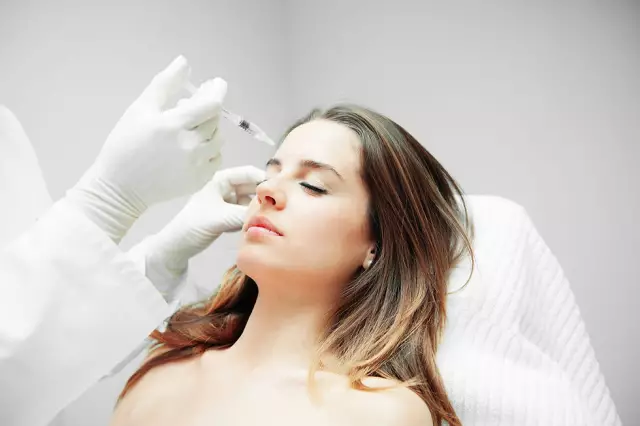- Author Rachel Wainwright [email protected].
- Public 2023-12-15 07:39.
- Last modified 2025-11-02 20:14.
Gel Nise: description of the drug, instructions, contraindications
Almost everyone has painkillers in their medicine cabinet. Among the most famous is Nise in the form of a gel, which helps to cope with pain and inflammation in diseases of the musculoskeletal system. The drug has been known on the pharmaceutical market for over 20 years.

Release form
Many people mistakenly believe that Nise for topical use is available in the form of an ointment, in fact, in the form of a gel. This is due to numerous factors. The fact is that the gel has more advantages, for example, gels are made on a water basis, and ointments are made on an oily one. Gel is considered to be a more physiological substance suitable for human skin. It is actively absorbed, begins to be absorbed noticeably, does not leave greasy spots on the skin and is completely absorbed. That is why the gel form is one of the most acceptable.
Description
Nise gel helps to relieve acute symptoms of various pathologies of the musculoskeletal system, accompanied by pain and inflammation. The main active ingredient of Nise gel is nimesulide.
You can buy the gel in almost any pharmacy at an affordable price. Nise gel is produced in tubes of 20, 50 and 100 grams. The gel is transparent, can have a yellowish tint, practically odorless.
How to apply correctly?
In the instructions for medical use, the method of application and the dose of Nise gel are detailed. So, first you need to wash or treat the area of the skin with an antiseptic. The skin should be clean and dry. Squeeze out a strip of gel about 2-3 centimeters and spread it evenly over the painful area. There is no need to rub in the gel, in just a few minutes it will be absorbed into the skin on its own. It is advisable not to cover the skin area with clothing and let it be completely absorbed. The number of applications is no more than 4 times per day.
Please note that this medication can be used without a doctor's recommendation, however, for a maximum of 10 days [1]. Further use is possible only after consultation with a specialist.

Contraindications
Nise gel has certain contraindications. It is not recommended to use the gel in the following cases:
- Allergy or intolerance to the components that make up the medication.
- Extensive burns, damage to the integrity of the skin in the area of ointment application.
- Skin infections.
- Carrying a baby.
- Lactation period.
- Aggravation of gastric ulcer.
- Age up to 7 years [2]
It is recommended to use with caution in renal and hepatic failure, severe heart failure, arterial hypertension, type 2 diabetes mellitus, in old and childhood.
When to apply?
Nise gel is used for local symptomatic treatment of diseases of the musculoskeletal system:
- Articular syndrome with exacerbation of gout
- Rheumatoid arthritis.
- Psoriatic arthritis.
- Ankylosing arthritis.
- Osteoarthritis.
- Osteochondrosis.
- Radiculitis.
- Inflammation of ligaments and tendons
- Bursitis.
- Sciatica.
- Lumbago.
- Muscle pain, regardless of etiology.
- Traumatic inflammation of the musculoskeletal system (bruises, ruptures, injuries). [3]
Consider several factors why Nise gel is popular with experts: This drug acts in two directions at once - it helps to reduce pain and the manifestation of the inflammatory process. Due to its wide range of indications, it can be used for many diagnoses and pain sensations of various localization. Useful information: THERE ARE CONTRAINDICATIONS. PLEASE CONSULT A SPECIALIST BEFORE USING. Be healthy! [1] [2] [3] [4] Kotova OV, Akarachkova Ye. S. Nimesulide: efficacy and safety of use. Consilium Medicum. 2016; 18 (2): 100-103. DOI: 10.26442 / 2075-1753_2016.2.100-103 [5] Found a mistake in the text? Select it and press Ctrl + Enter.
Benefits and action of Nise gel
Conclusions and recommendations






